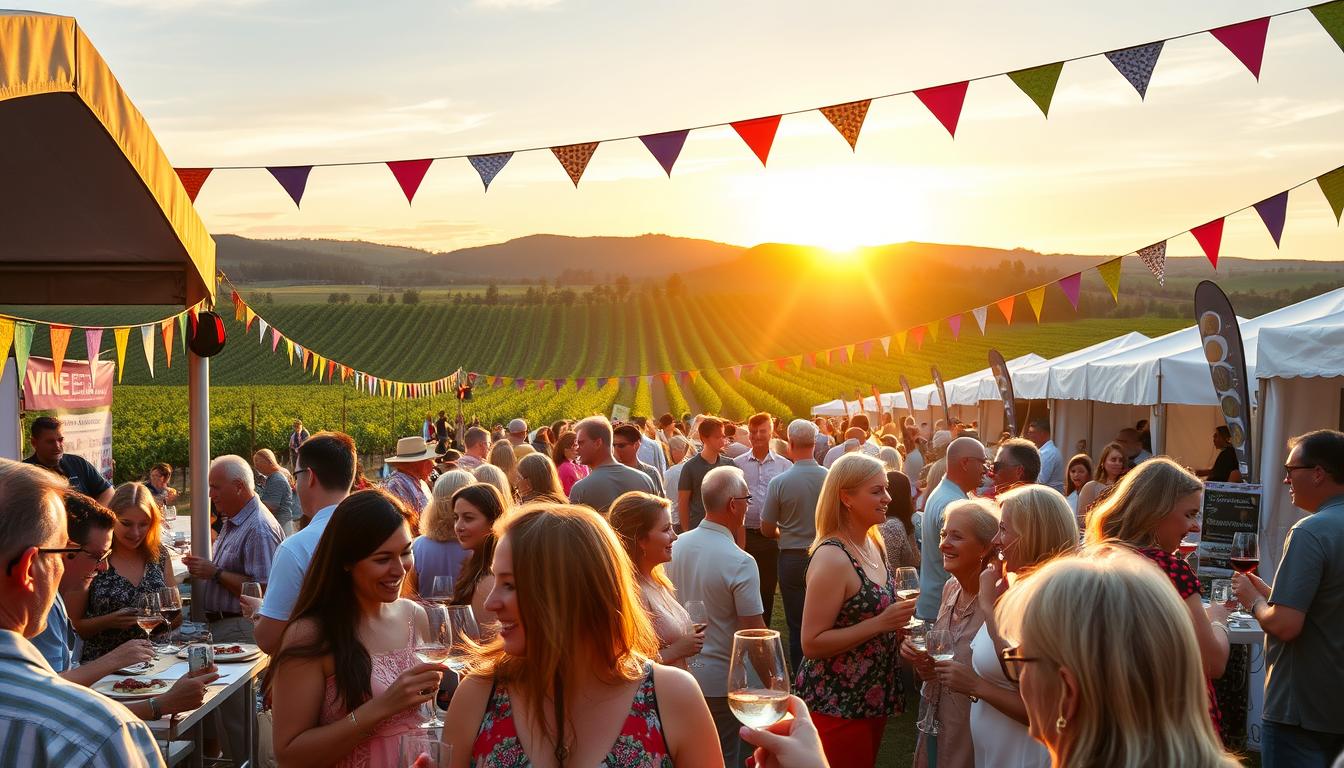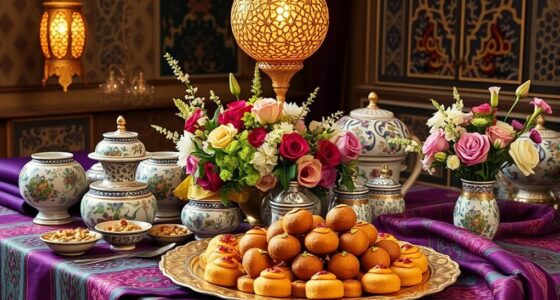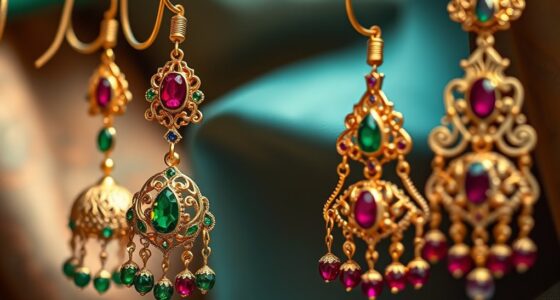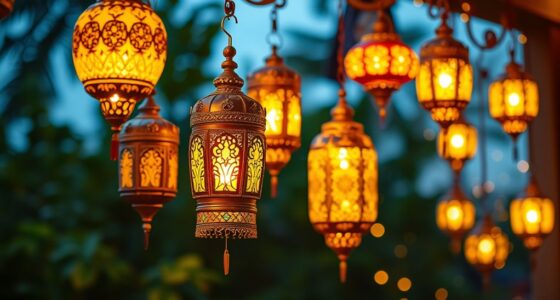Imagine stepping into a vibrant world where every sip tells a story, and every bite is a celebration of culinary artistry. The air hums with laughter, music, and a sense of community as enthusiasts come together to revel in the magic of wine festivals. These gatherings are more than just events; they are experiences that awaken your senses and forge connections, whether you’re mingling with local winemakers or exploring new flavor profiles. As you navigate through rows of thoughtfully curated tastings, you’ll find not just an array of exceptional wines but also a place where memories are made. You’ll discover that at the heart of these festivals lies a passion for culture and gastronomy that unites us all.
The USA is home to some of the best wine festivals, each uniquely crafted to offer something special. Whether you’re a seasoned connoisseur or a casual wine lover, there’s a festival out there waiting just for you. Get ready to experience the excitement of wine tasting events that leave you with a deeper appreciation of the art of winemaking, all while enjoying the culinary delights prepared by talented chefs. So, grab your glass and let the festivities begin!
Key Takeaways
- Wine festivals offer a celebration of culture, gastronomy, and community.
- Expect tastings from local and international wineries, paired with gourmet food.
- These events cater to both seasoned oenophiles and casual wine drinkers.
- Most festivals require attendees to be 21 or older with valid ID.
- Unique experiences such as live entertainment and demonstrations are common.
- The festival environment is perfect for making new friends and lasting memories.
- Advanced ticketing options are available, providing early access and exclusive experiences.
Discover the Excitement of Wine Festivals
Wine festivals are vibrant celebrations that immerse you in the rich culture of viniculture. Expect an inviting atmosphere filled with the sounds of clinking glasses and delightful conversations. Attending these events allows you to savor exciting wine experiences as you sample a wide variety of wines from regional producers. Meet the winemakers, learn about the intricacies of wine-making, and dive deeper into the flavors that make their offerings unique.

What sets apart popular wine festivals is the range of culinary delights available. From gourmet food trucks to high-end dining options, you can indulge in local cuisine while pairing your meals with exquisite wines. Cooking demonstrations and interactive sessions provide opportunities to discover food and wine pairings, enhancing your festival experience. In this enchanting environment, connecting with fellow wine lovers enriches your appreciation for wine, creating bonds over shared passions.
What to Expect at a Wine Festival
- Sampling Opportunities: Taste wines from various regions and styles.
- Winemaker Interactions: Engage directly with the creators of the wines.
- Culinary Delights: Enjoy an array of food vendors and culinary experiences.
- Informative Sessions: Attend lectures and workshops about wine techniques and history.
- Networking: Connect with other enthusiasts and industry professionals.
| Festival Name | Location | Years Active | Wineries Featured |
|---|---|---|---|
| California Wine Festival | California | Since 2004 | Various |
| Paso Wine Fest | Paso Robles, CA | Annual | 100+ |
| Taste of Sonoma | Sonoma, CA | Since 2008 | 100+ |
| Taste of Napa | Napa, CA | Annual | 70+ |
| International Pinot Noir Celebration | Oregon | Since 1987 | 70+ |
| Savor Idaho | Idaho | Since 2009 | 30 |
| Taste of Vail | Vail, CO | 30+ years | 100+ |
| Finger Lakes Wine Festival | New York | Annual | Dozens |
Each of these events offers a unique flair, making them must-visit occasions on your annual calendar. Engaging with the local culture, tasting distinctive wines, and exploring your palate truly characterizes the thrill of wine festivals.
Top Wine Tasting Events in the United States
Exploring wine tasting events offers you a chance to immerse yourself in the vibrant world of flavor and craftsmanship. These gatherings provide not only a chance to taste great wine but also an opportunity to learn about the stories behind each bottle. Understanding the different varietal characteristics enhances your appreciation, making each sip more meaningful.
The Significance of Wine Tasting
Wine tasting serves as a gateway to the rich complexity of various wines. It’s not just about drinking; it’s an experience that cultivates your palate and sharpens your tasting skills. During events, you can engage with knowledgeable sommeliers and winemakers who share insights about different wine profiles and tasting notes. This interaction deepens your knowledge, allowing you to appreciate the nuances of each glass.
Wine Crafting Techniques to Explore
Participating in wine tasting events often opens up pathways to learn about various wine craft techniques. You’ll have the chance to witness unique processes such as:
- Barrel aging
- Blending workshops
- Food pairing demonstrations
Understanding these techniques enriches your experience at wine festivals. You gain insight into the meticulous artistry behind winemaking, which enhances your appreciation for the efforts of the winemakers. With plentiful participation from wineries around the globe, events like the Charleston Wine + Food festival and the Taste Washington showcase a remarkable array of options to taste great wine while diving deeper into the craft.

| Event Name | Location | Wineries Participating | Event Duration |
|---|---|---|---|
| Charleston Wine + Food Festival | Charleston, SC | Plentiful participation from global wineries | March 2025 |
| San Diego Bay Wine + Food Festival | San Diego, CA | Over 800 producers from California regions | November 2025 |
| Taste Washington | Seattle, WA | More than 200 wineries | April 2025 |
| La Paulée | San Francisco & New York City | Participating winemakers from around the world | Feb 27-March 1, 2025 & March 4-8, 2025 |
| Food & Wine Classic | Aspen, CO | Numerous wineries and culinary experts | June 20-22, 2025 |
| Santa Fe Wine & Chile Fiesta | Santa Fe, NM | Over 60 local restaurant chefs | September 2025 |
| Healdsburg Wine & Food Experience | Healdsburg, CA | Showcasing local wineries | May 15-18, 2025 |
| Two Up Wine Down | Charlottesville, VA | Emerging producers | Annually held in July |
Wine Festival Calendar: When and Where to Go
Keeping track of the wine festival calendar can be a delightful but challenging task for enthusiasts. With numerous upcoming wine festivals occurring throughout the year across the United States, planning your visits becomes essential. Iconic events like the Napa Valley Wine Auction in June and the San Diego Bay Wine + Food Festival in November serve as highlights within this dynamic calendar. Attending these festivals not only offers wine tasting experiences but also exposes you to local culinary delights.
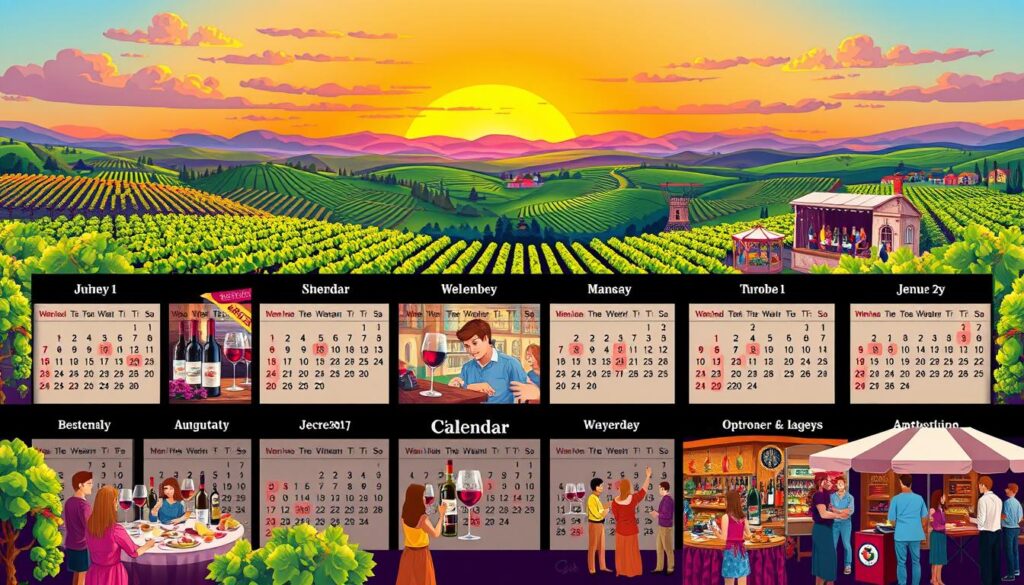
| Event Name | Date | Location | Description |
|---|---|---|---|
| Halloween Food & Wine Fest | Saturdays and Sundays | Local Winery | A festive celebration with wine pairings and themed activities |
| Pumpkin Pick & Sip | Thursdays | Local Winery | Enjoy pumpkin picking alongside wine tastings |
| Comedy Night | Fridays | Local Winery | Light-hearted entertainment with wine selections |
| ‘Walking the Line’ Concert | December 7 | Local Venue | A musical tribute featuring beloved songs |
| Food Truck Festival | Various Weekends | Local Park | A gathering featuring food trucks and local wines |
These events are perfect opportunities to find a wine festival near me, where you can explore different regions and their unique offerings. With the variety of festivals listed, you may wish to explore multiple locations to maximize your tasting adventures. Don’t forget to check ticket availability and event details to ensure an enjoyable experience at your chosen upcoming wine festivals!
Must-Visit Wine Festivals in California
California is a land of vibrant wine culture, offering some of the best wine festivals in the country. These festivals not only showcase exceptional wines but also immerse you in the region’s rich culinary experiences. From breathtaking coastal views to charming towns buzzed with entertainment, visiting these must-visit wine festivals will truly enhance your appreciation of wine.
California Wine Festival Overview
The California Wine Festival stands out as one of the premier wine festivals highlighting the state’s extensive wine offerings. Events are hosted in picturesque locations like Santa Barbara, Carlsbad, and Dana Point. These California wine festivals attract both local wine lovers and tourists eager to explore various wines, including celebrated Zinfandels and other varietals.
Events to Look Out For
Throughout the year, numerous events cater to different tastes. Some of the notable ones include:
- Santa Barbara Wine Festival – Experience wine tastings against a stunning coastal backdrop.
- Lodi Wine & Chocolate Weekend – Celebrate the delightful pairing of Zinfandel wines and chocolates.
- Temecula Valley Balloon & Wine Festival – Taste local wines while enjoying hot air balloons.
- Los Angeles Wine & Food Festival – Enjoy a diverse culinary showcase with 90 renowned chefs.
- Healdsburg Wine & Food Experience – A unique blend of wine, cuisine, and live music in Sonoma County.
Mark your calendar for the upcoming events like the California Wine Festival in Santa Barbara on June 14-15, 2023, and the Temecula Balloon & Wine Festival from May 19-21, 2023. These festivals undoubtedly rank among the best wine festivals in the nation, offering unforgettable experiences for every attendee.
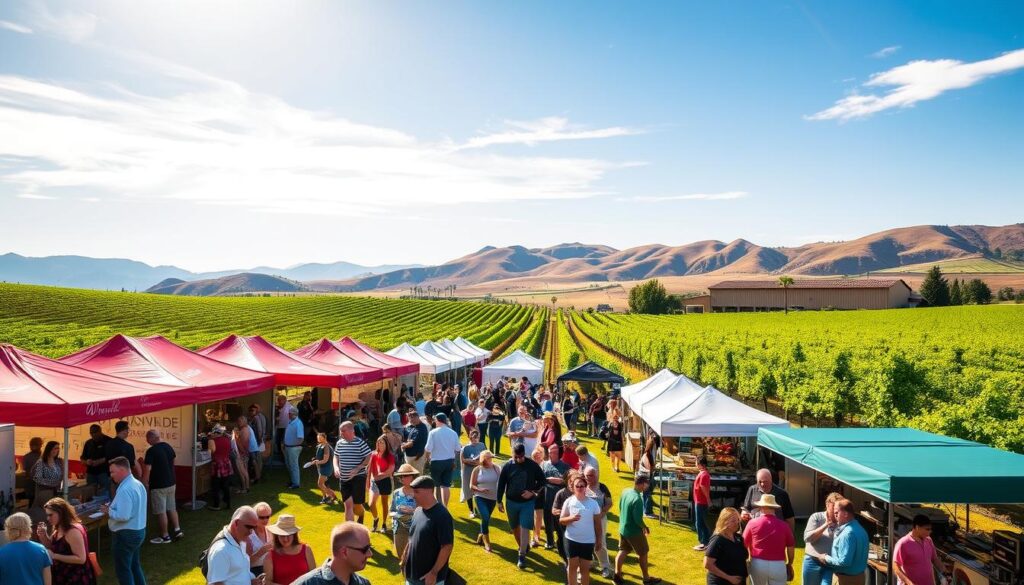
Exploring Wine Festivals in the Southeast
The Southeast offers an exciting array of wine festivals that highlight the region’s unique flavors and vibrant culture. Attending these events allows you to immerse yourself in the local wine scene while enjoying a festive atmosphere. Some of the most popular wine festivals in the Southeast include a mix of culinary and beverage experiences that showcase the best local wineries, chefs, and vendors.
Highlights from Popular Festivals
Among the standout celebrations, the Food Network & Cooking Channel South Beach Wine & Food Festival shines with over 100 events spanning from Miami to Palm Beach. A highlight is the Goya Foods’ Grand Tasting Village, a massive area that covers approximately four football fields. The Hilton Head Island Seafood Festival brings culinary artistry to the forefront with a James Beard dinner, chef-led master classes, and fun activities like an oyster roast.
In Charleston, the Charleston Wine + Food festival features more than 125 events, celebrating the contributions of culinary legends and celebrity chefs. The Atlanta Food & Wine Festival showcases over 150 chefs and sommeliers from various regions, creating a dynamic experience for all attendees. With such a variety of events, you’ll find opportunities to taste exceptional wines and culinary creations.
The New Orleans Wine & Food Experience is another prime example, featuring the Royal Street Stroll and a two-day Grand Tasting event. For those who wish to explore further, Euphoria in Greenville, South Carolina, gathers Michelin-starred chefs and world-class musicians for a four-day extravaganza. You can also enjoy festivals like Music City Food + Wine Festival in Nashville and Chow Chow in Asheville, both known for their unique local flavors and culinary competitions.
Georgia, within this region, boasts eight wine festivals that take place from February to September. Notable events include the Lake Oconee Food & Wine Festival, with around 200 wines featured, and the Hiawassee Highlands Wine Festival, showcasing more than 30 wineries within its beautiful 20-acre venue. Each of these wine festivals in the Southeast promises a delightful exploration for wine lovers, complemented by the camaraderie of local wine festival vendors, making every event a memorable experience.
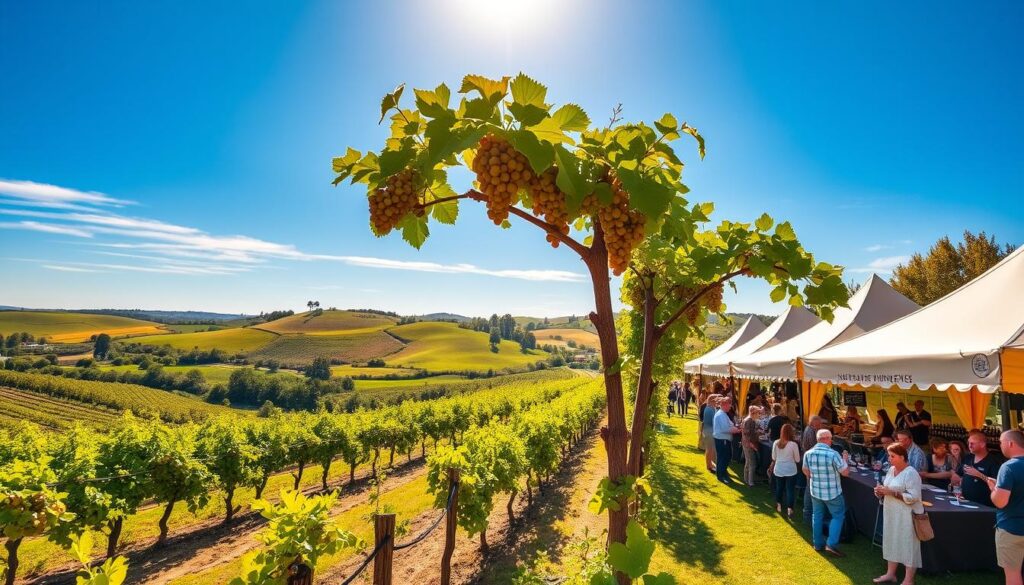
Unique Wine Experiences in the Midwest
The Midwest is rapidly gaining fame as a prime destination for unique wine experiences that delight both enthusiasts and casual drinkers alike. With so many Midwest wine festivals popping up, you can explore wine festivals that showcase the region’s diverse varietals and local wineries. These festivals offer not only a chance to taste exceptional wines but also an opportunity to connect with local winemakers and experience the culture of the area.
Many vineyards are conveniently located within driving distance to major cities, making weekend getaways easy to plan. For example, the Chateau Chantal Winery & Inn in Traverse City, MI, sprawls across 65 acres, inviting you to immerse yourself in its scenic beauty. Black Star Farms, also in Suttons Bay, MI, features three miles of hiking trails and paved biking paths, providing a serene backdrop for wine tasting.
The Von Stiehl Winery in Algoma, WI, holds the title of the oldest licensed winery in Wisconsin, with over 40 wines to choose from. At Cedar Ridge in Swisher, IA, multiple seating areas including a tasting room, vineyard room, and outdoor options allow for an inviting atmosphere while enjoying your favorite wines. Various other locations, such as the Four Daughters Vineyard & Winery in Spring Valley, MN, offer expansive outdoor spaces perfect for gatherings and tasting sessions.
Many wineries boast unique specialties, such as Mawby Vineyards, renowned for its sparkling wines, or Vermilion Valley in Wakeman, OH, where you can explore natural wines from one of the few 100 percent sustainable winemakers in the region. A visit to Prairie Berry Winery in Hill City, SD, presents breathtaking views of Black Elk Peak, complemented by a limited but delightful menu.
Here’s a snapshot of some standout wineries that contribute to these unique wine experiences:
| Winery | Location | Highlights |
|---|---|---|
| Chateau Chantal Winery & Inn | Traverse City, MI | 65 acres of vineyards and scenic views |
| Black Star Farms | Suttons Bay, MI | 3 miles of hiking trails |
| Von Stiehl Winery | Algoma, WI | Over 40 wines to taste |
| Cedar Ridge | Swisher, IA | Multiple seating areas for tastings |
| Mawby Vineyards | Suttons Bay, MI | Specializes in sparkling wines |
| Prairie Berry Winery | Hill City, SD | Spectacular views of Black Elk Peak |
| Oliver Winery & Vineyards | Bloomington, IN | Lush gardens and alfresco picnics |
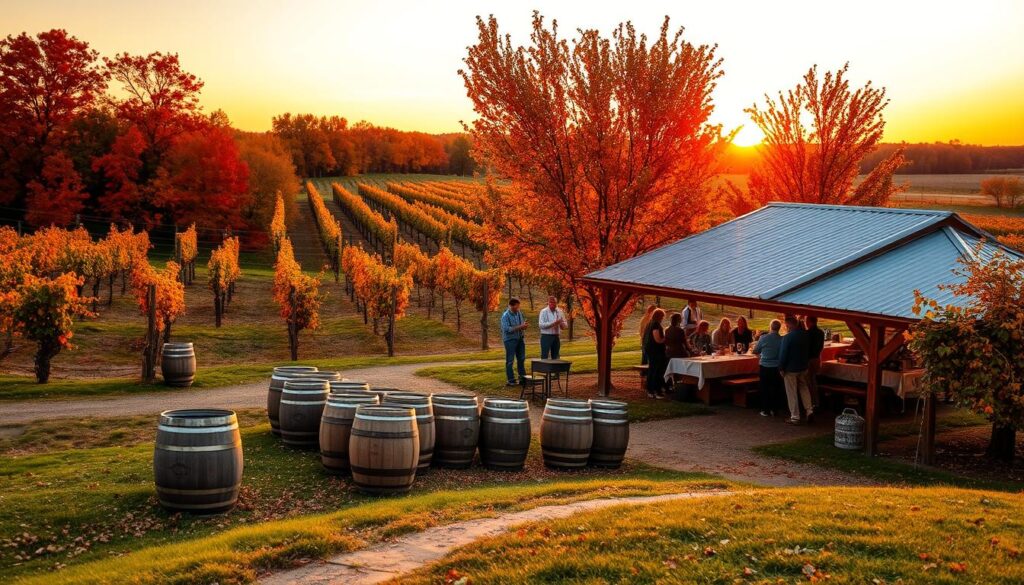
As you venture through the Midwest, each winery brings a flavor of the local culture, making it an exciting journey for adventurous wine lovers. Embrace these opportunities to explore wine festivals that truly reflect the spirit of the region while tasting remarkable wines crafted with passion.
Wine Festivals: A Culinary Adventure
Culinary adventures at wine festivals often captivate attendees as local chefs bring the region’s flavors to the forefront. At these events, participants can indulge in exceptional food and wine pairing experiences that elevate the overall enjoyment of the festival. The collaboration between wine producers and local chefs transforms each tasting event into a flavorful journey that explores the connection between food and wine.
The Role of Local Chefs
Local chefs play a pivotal role in enhancing the wine festivals culinary adventure. They showcase their culinary artistry through live demonstrations, interactive tastings, and unique dishes that complement the featured wines. Each chef highlights the freshest ingredients sourced from local markets, crafting dishes that reflect the region’s rich culinary heritage. This dynamic not only supports local restaurants but also allows festival-goers to deepen their appreciation for both gastronomy and oenology.
Pairing Food with Wine
Food and wine pairing serves as a fundamental aspect of the festival experience. Attendees can learn how specific flavors can enhance or contrast with various wines, creating a delightful balance on the palate. Sample various combinations during the event, like pairing a zesty Sauvignon Blanc with fresh seafood or an earthy Pinot Noir with roasted vegetables. These experiences confirm that the relationship between food and wine transcends traditional boundaries, encouraging visitors to discover new favorite pairings.
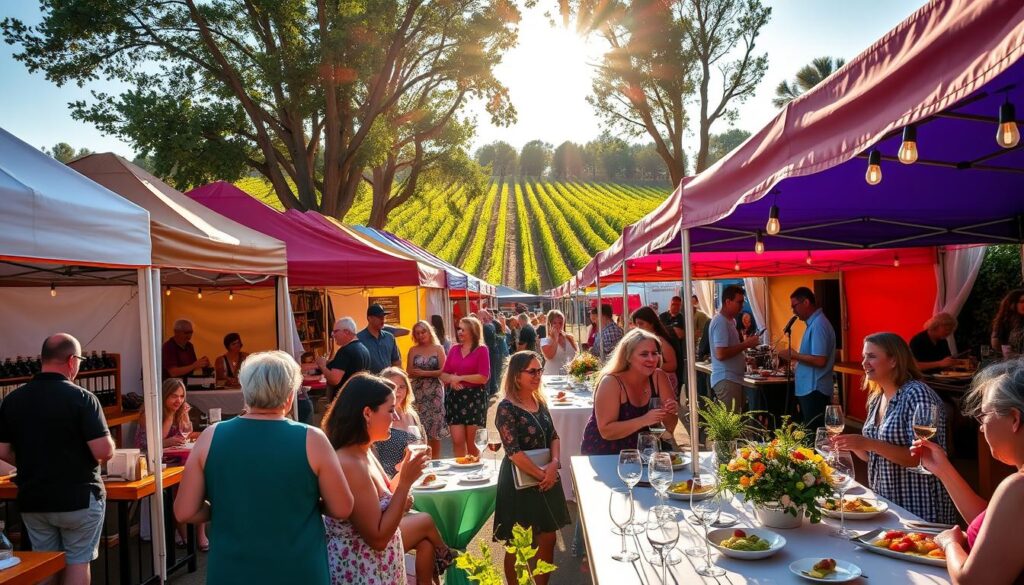
| Event | Date | Location | Key Features |
|---|---|---|---|
| St. Augustine Food + Wine Festival | October 26, 2025 | Raleigh, NC | Whiskey, Wine & Wildlife, local chef showcases |
| Boca Raton Wine & Food Festival | November 8, 2025 | Boca Raton, FL | Chef competition, Craft Brew Battle, culinary cuisines |
These festivals create a memorable atmosphere for friends, families, and food enthusiasts alike, making them an essential part of the wine experience journey!
Attending a Wine Festival Near You
Attending wine festivals can be a delightful experience filled with flavors, aromas, and cultural exploration. To enhance your enjoyment, it’s vital to plan your visit with care. Understanding the festival’s offerings and the ticket options available can significantly impact your experience.
How to Plan Your Visit
As you prepare for attending wine festivals, consider these essential tips:
- Research festival schedules and lineups to find events that align with your interests.
- Consider accommodations nearby to minimize travel stress and allow you to fully enjoy the experience.
- Wear comfortable clothing and shoes, considering the outdoor environment of many festivals.
- Bring essentials like sunscreen, hats, and hydration tools to maintain comfort throughout the day.
Understanding Wine Festival Tickets
When it comes to wine festival tickets, different tiers often provide varying levels of access:
| Ticket Type | Benefits | Price Range |
|---|---|---|
| General Admission | Access to tastings, live music, and food vendors. | $50 – $100 |
| Early Access Pass | Priority access to tastings, special events, and exclusive pours. | $100 – $150 |
| VIP Tickets | Private lounges, luxury tastings, and enhanced culinary experiences. | $150 – $300 |
Make sure to secure your wine festival tickets early, as popular events often sell out quickly. With thoughtful planning, your wine festival experience can become an unforgettable adventure filled with tastings, foods, and connections.
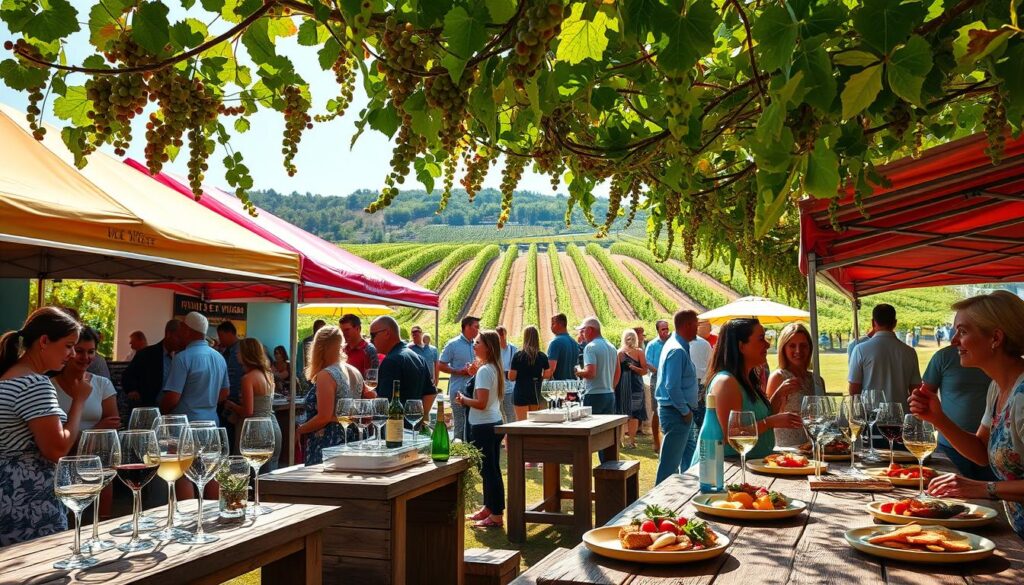
What to Expect from Premier Wine Festivals
When attending premier wine festivals, you’ll find yourself immersed in a vibrant atmosphere that celebrates not only exceptional wines but also the diverse cultures surrounding them. From the 40th anniversary of the Maryland Wine Festival, which has transitioned to a single Saturday event running from 11 a.m. to 5 p.m., to festivals featuring over 400 wines available for sampling, you’ll be part of an exciting wine event that highlights both renowned wineries and up-and-coming brands eager to share their stories.
Here’s what to expect: engaging educational opportunities await you, whether through wine seminars or curated tastings that deepen your understanding of different wine varieties and ideal pairings. Many festivals, like the Jungle Jim’s International Wine Festival, offer exclusive ticket options such as Connoisseur and Grand Tasting tickets, granting access to special areas and unique experiences, ensuring that every aspect of the festival excites your senses.
In addition to wine sampling, prepared culinary delights play a significant role at these festivals. Attendees can enjoy local cuisines, live music, and themed dinners that complement the wines perfectly. The growing number of participating wineries—17 in the Explorer Village of the Maryland Wine Festival, up from 11 the previous year—underscores the festival’s expanding allure, making it an unmissable experience for wine lovers and novices alike.
